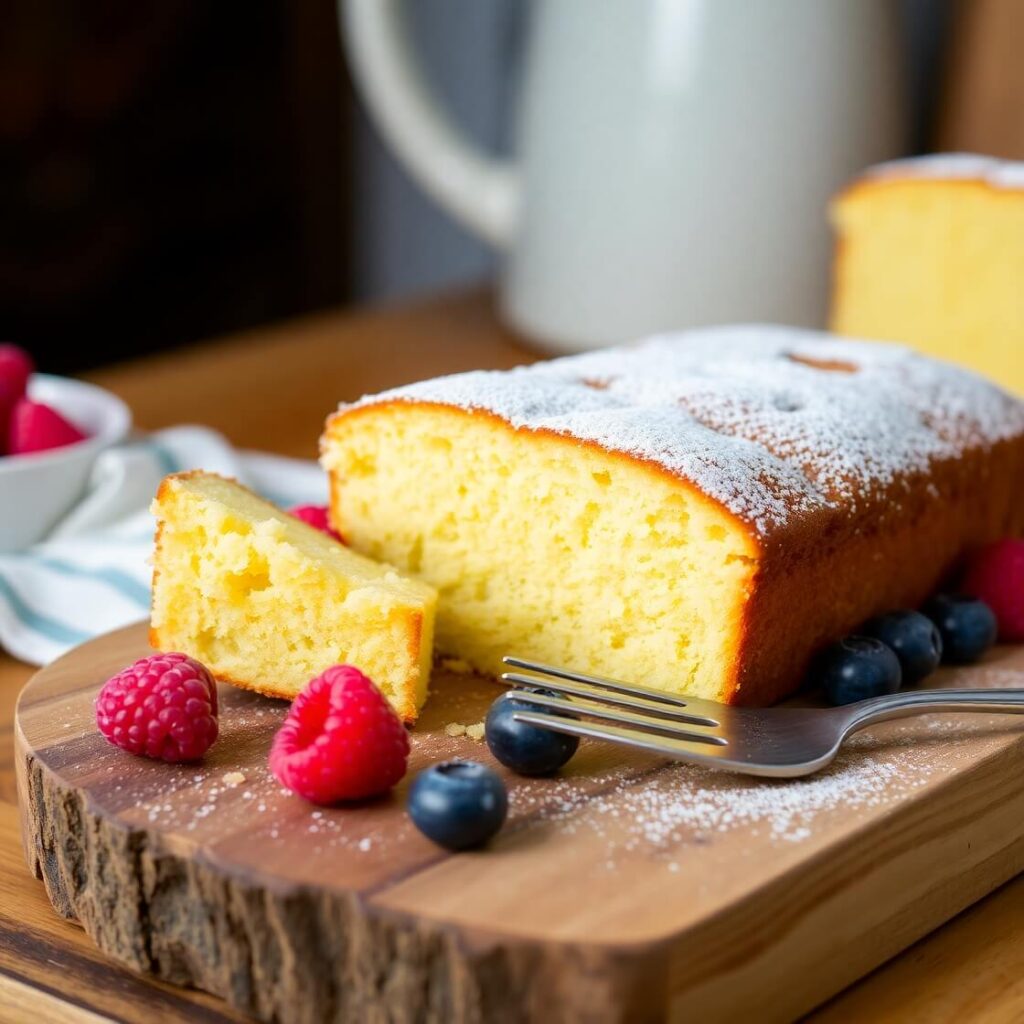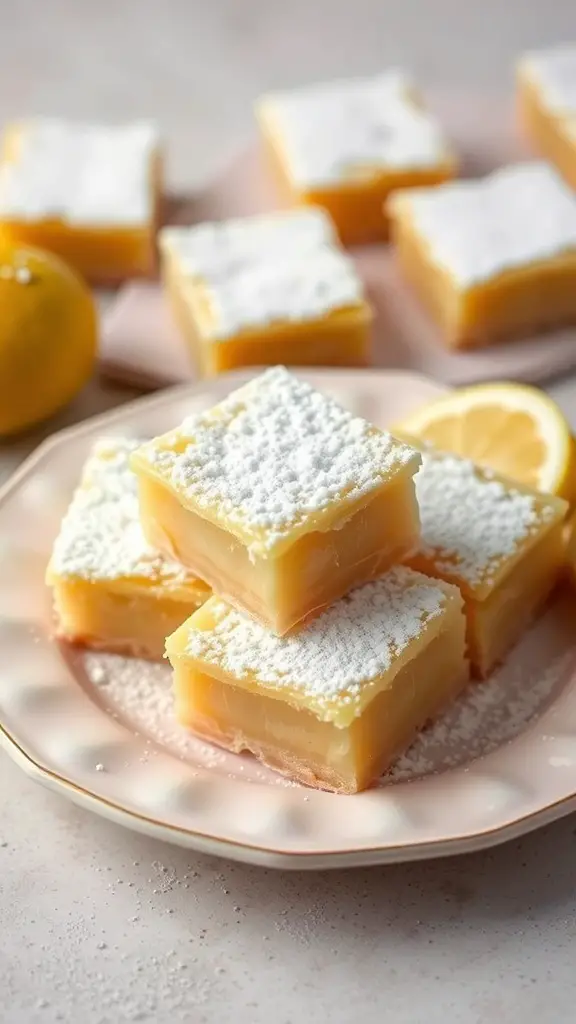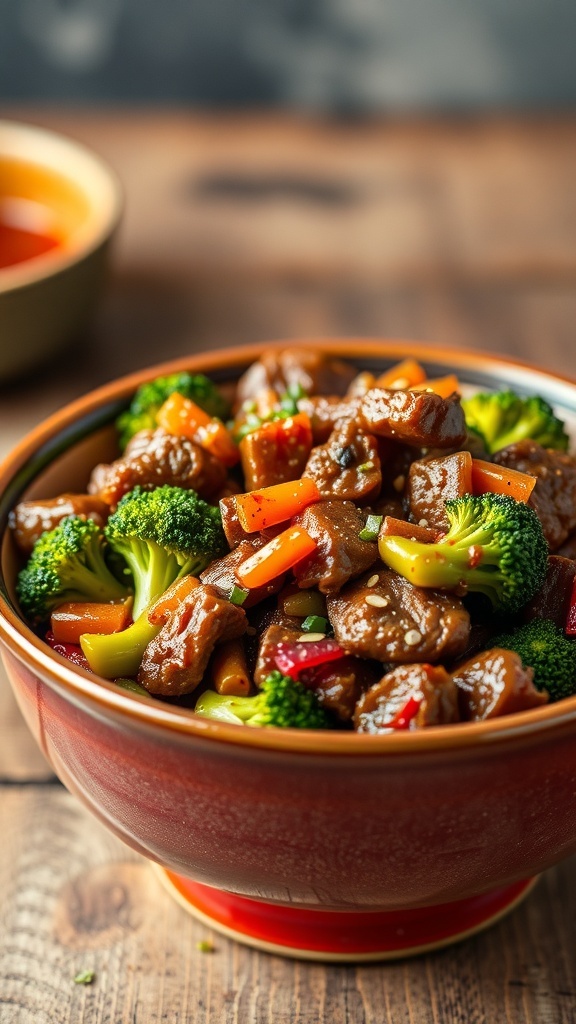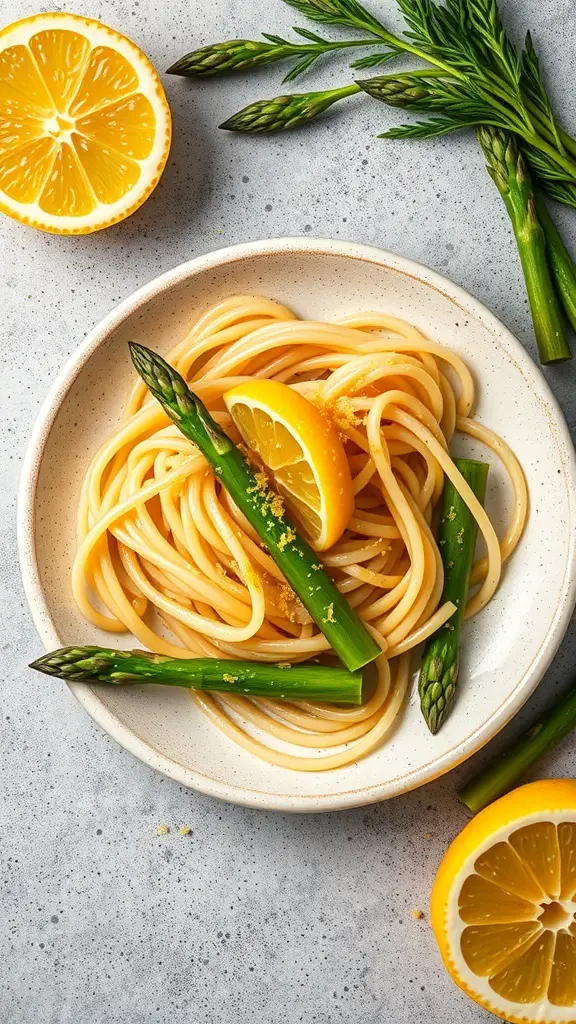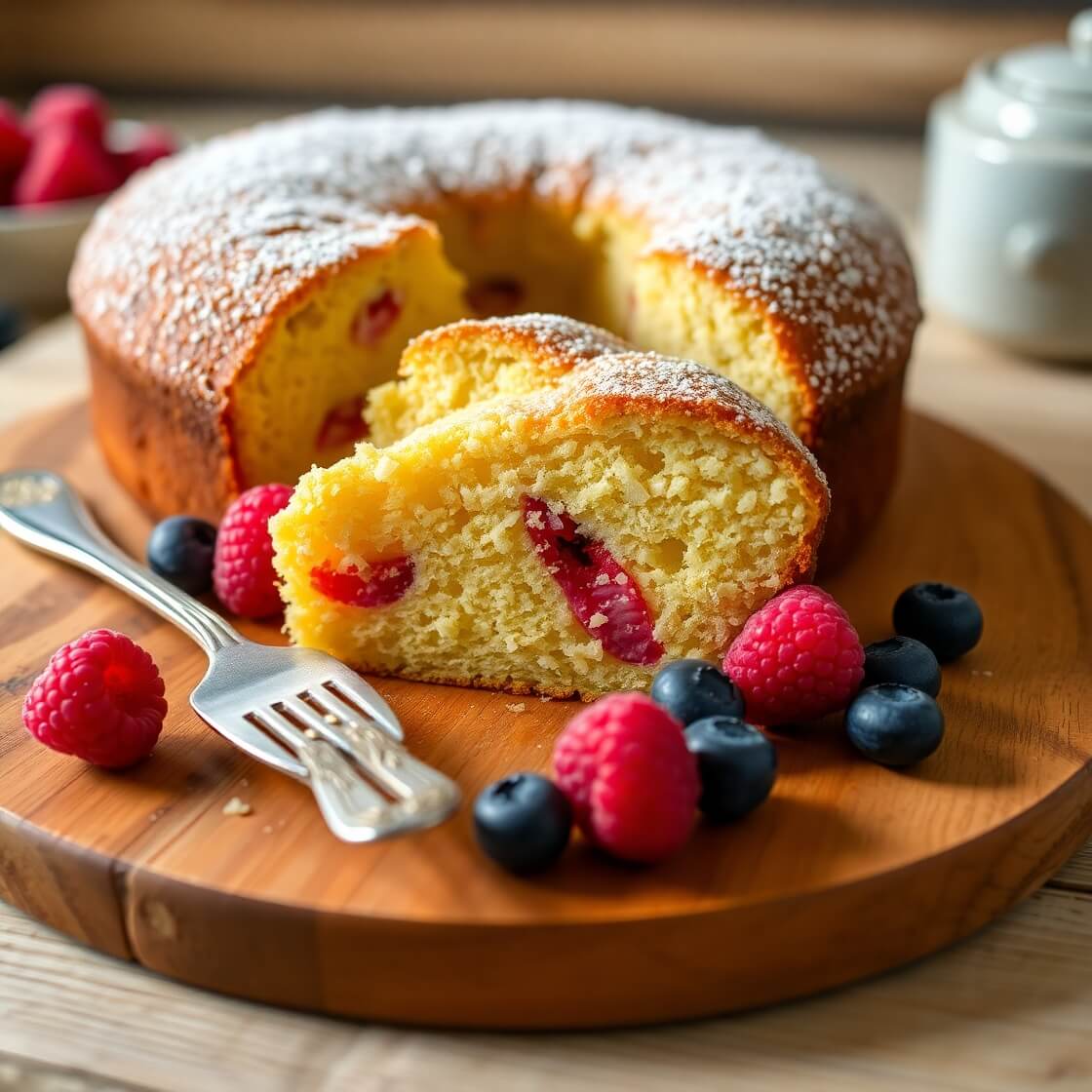
French Butter Cake is a delightful treat that perfectly balances richness and tenderness. I decided to create this recipe because I wanted to bring the charm of classic French baking into my own kitchen. This cake is unlike your everyday butter cake — it has a dense yet moist crumb with a buttery aroma that fills your home with warmth.
Many people make this cake as a special occasion dessert or simply to enjoy a slice alongside a cup of tea or coffee. It’s one of those recipes that feels fancy but is surprisingly simple to prepare. If you love buttery, melt-in-your-mouth cakes, keep reading to discover how easy it is to master this French classic.
Why I Love This Recipe
What makes French Butter Cake so special is its wonderful texture and rich flavor, which comes from the generous use of butter and a unique method of mixing. Unlike lighter sponge cakes, this cake has a substantial crumb that’s tender but still holds together well. It’s buttery without being greasy, and slightly sweet, which makes it perfect for both casual snacking and elegant dessert platters.
People often make this cake because it’s versatile—it can be enjoyed plain or dressed up with fresh fruit, glaze, or a dusting of powdered sugar. The flavor profile is simple but deeply satisfying. What I truly love about it is how this cake showcases butter in its purest form. It’s a reminder that sometimes the simplest ingredients, treated with care, create the most memorable flavors.
If you’re looking for a cake that feels indulgent but isn’t overly complicated, French Butter Cake is a great choice. It’s a crowd-pleaser that’s ideal for everything from family gatherings to quiet moments of self-indulgence.
Ingredients for French Butter Cake
Before you start baking, you’ll want to gather all your ingredients. This cake relies on a handful of quality components to create its signature flavor and texture.
You’ll need:
- Unsalted butter, softened: The star of the show. Using unsalted butter lets you control the salt level precisely.
- Granulated sugar: Adds sweetness and helps create a tender crumb.
- Eggs: They bind the ingredients and add richness.
- All-purpose flour: Provides the structure.
- Baking powder: Gives a subtle lift without making the cake too airy.
- Salt: Enhances flavor and balances the sweetness.
- Whole milk: Keeps the cake moist and adds a slight creaminess.
- Vanilla extract: Adds a warm, fragrant note.
All these ingredients work together in harmony. You don’t need any fancy or hard-to-find components, which is part of the charm of this recipe. Just make sure your butter is softened to room temperature for easy creaming, and your eggs are fresh for the best results.
How Much Time Will You Need
This cake is surprisingly quick to make. From start to finish, you’re looking at around 1 hour.
- Preparation time: 20 minutes (including softening butter and measuring ingredients)
- Baking time: 35 to 40 minutes
- Cooling time: 10 to 15 minutes before serving
It’s a straightforward recipe that fits nicely into a busy schedule or an afternoon baking session. The best part is that it doesn’t require any complicated techniques or long resting periods, so you can enjoy your cake fresh and warm in under an hour.
How to Make This French Butter Cake
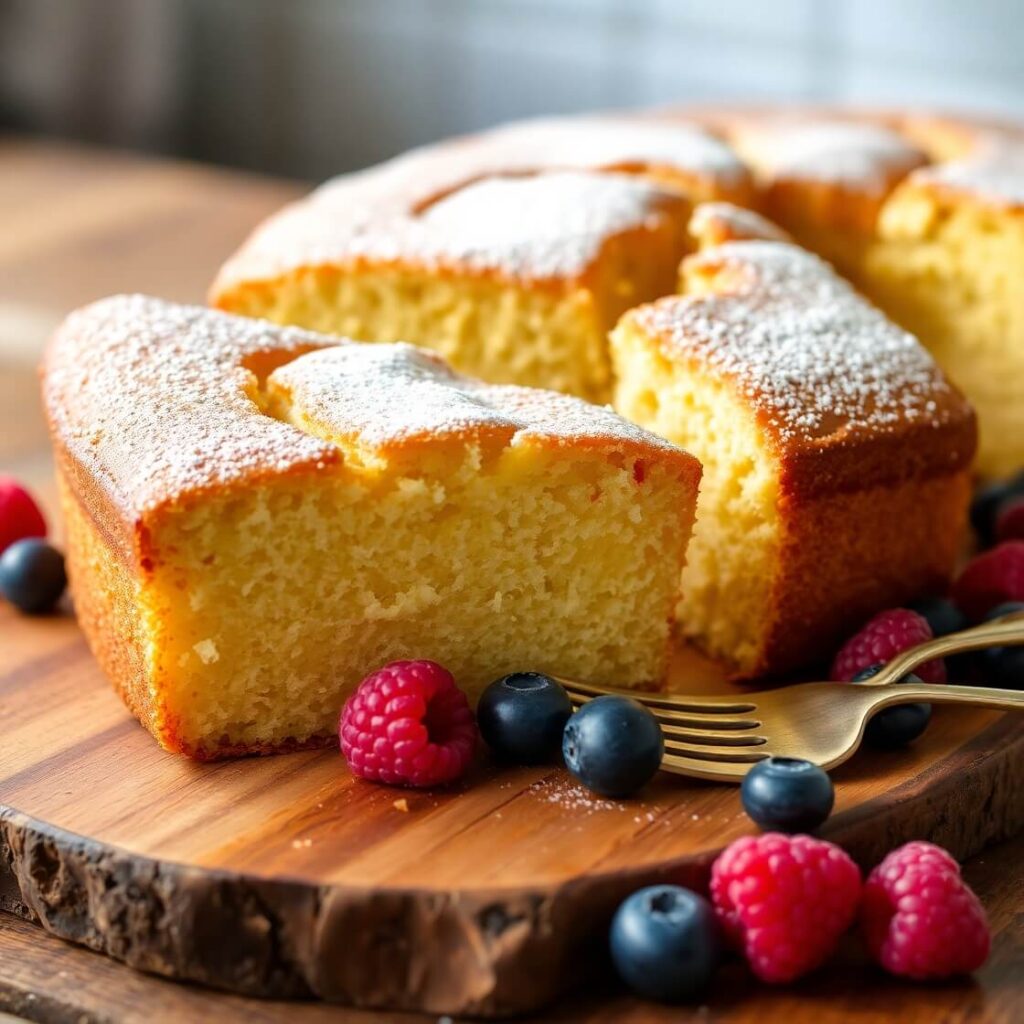
Now, let me walk you through the step-by-step process. I’ll keep it detailed enough so that anyone—even beginners—can feel confident while baking.
Step – 1: Preheat your oven to 350°F (175°C). Grease a loaf pan or a round cake pan with butter and lightly dust it with flour to prevent sticking.
Step – 2: In a large mixing bowl, cream the softened butter and granulated sugar together using a hand mixer or stand mixer. Beat on medium speed for about 3-5 minutes until the mixture is light, fluffy, and pale in color.
Step – 3: Add the eggs one at a time to the butter-sugar mixture, beating well after each addition. This helps to incorporate air and ensure a smooth batter.
Step – 4: In a separate bowl, whisk together the all-purpose flour, baking powder, and salt. This ensures the leavening agent is evenly distributed.
Step – 5: Gradually add the dry ingredients to the wet mixture, alternating with the milk. Start and end with the dry ingredients. Mix on low speed just until combined — be careful not to overmix, or your cake might turn out dense.
Step – 6: Stir in the vanilla extract gently.
Step – 7: Pour the batter into your prepared pan, smoothing the top with a spatula.
Step – 8: Bake in the preheated oven for 35-40 minutes, or until a toothpick inserted in the center comes out clean.
Step – 9: Remove the cake from the oven and let it cool in the pan for about 10-15 minutes before transferring it to a wire rack to cool completely.
Step – 10: Once cooled, slice and serve! This cake is delicious on its own, but you can also dust it with powdered sugar or top it with fresh berries for an extra touch.
Substitutions
While I recommend sticking to the classic ingredients for the best results, there are a few substitutions you can make if needed.
If you don’t have whole milk, you can substitute with:
- Buttermilk: Adds a slight tang and makes the cake even more tender.
- Almond milk or oat milk: For a dairy-free option, though the texture will be slightly different.
Butter can be swapped with:
- European-style butter: If you want a richer flavor with higher fat content.
- Margarine or vegan butter substitutes: For a dairy-free version, but be aware the taste and texture might change.
For flour:
- You can use cake flour instead of all-purpose flour for an even softer crumb, but it might change the structure slightly.
Egg replacements:
- If you need to make this recipe vegan or egg-free, try using flax eggs (1 tablespoon flaxseed meal + 3 tablespoons water per egg), but the cake will be denser.
Best Side Dishes for French Butter Cake
To elevate your French Butter Cake experience, try pairing it with these side dishes:
- Fresh berry compote: The natural tartness of berries balances the buttery richness beautifully.
- Whipped cream: Lightly sweetened whipped cream adds a silky texture.
- A scoop of vanilla ice cream: Perfect for a decadent dessert twist, especially if you serve the cake slightly warm.
Serving and Presentation Tips
Serving French Butter Cake is all about highlighting its buttery richness and delicate crumb. One of my favorite ways to present this cake is by slicing it thick and serving it on a simple, elegant plate—sometimes with a light dusting of powdered sugar on top to add a touch of visual appeal without overpowering the flavor.
For a more refined presentation, place a small dollop of freshly whipped cream or crème fraîche on the side, topped with a few fresh berries like raspberries or blueberries. The contrast of the tart fruit with the rich cake creates a beautiful balance of flavors and colors on the plate.
If you want to impress guests, consider serving the cake warm alongside a small scoop of vanilla bean ice cream or a drizzle of warm caramel sauce. Using a wooden cutting board or a rustic serving platter can also add charm and make the experience feel more intimate and homey.
Remember, simplicity is key here. The cake is the star, so avoid overcrowding the plate. A clean, neat slice with one or two accompaniments will let its buttery texture and flavor shine.
Tips and Tricks to Make This Recipe Even Better
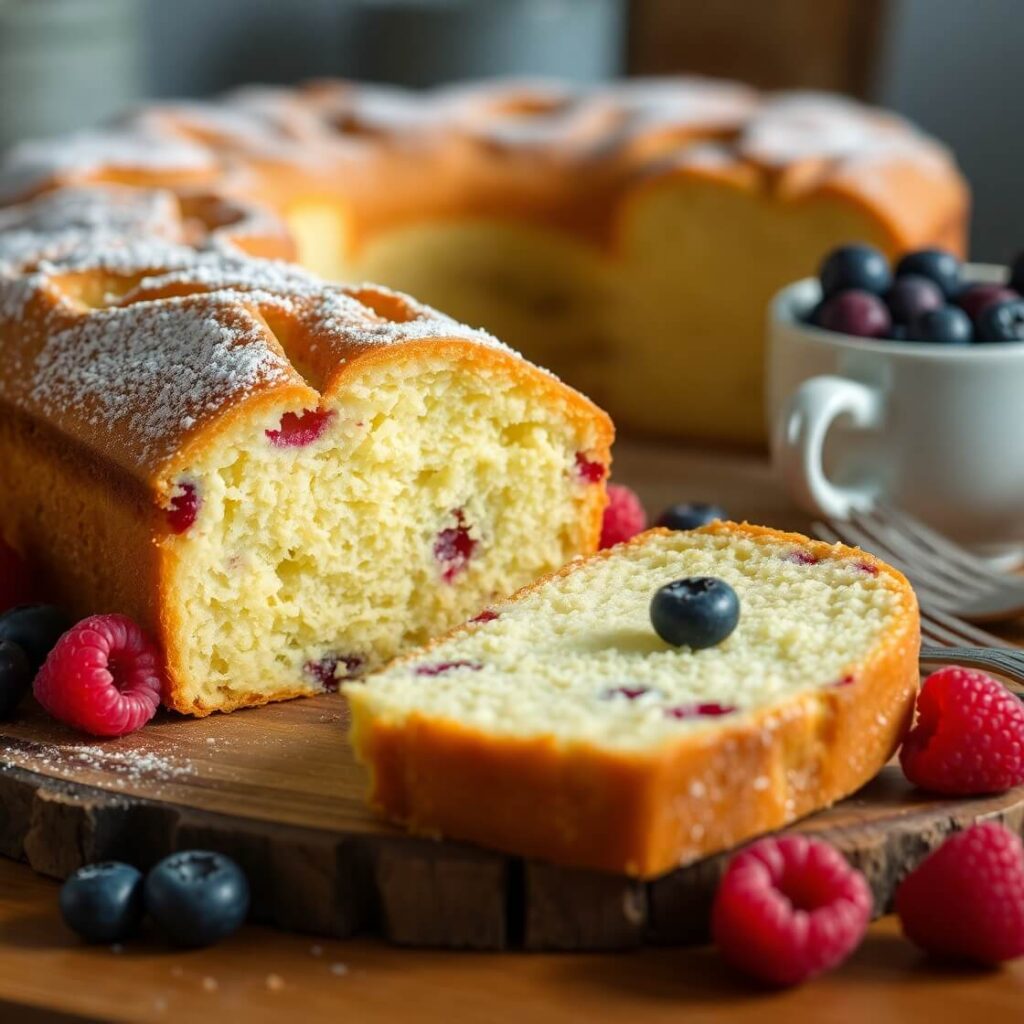
To get the most from your French Butter Cake, here are some tips I’ve learned through experience:
- Use room temperature butter and eggs. This ensures everything blends smoothly, creating a uniform batter that bakes evenly.
- Beat the butter and sugar long enough. This step is crucial as it incorporates air into the batter, which helps lighten the dense nature of the cake.
- Don’t overmix once you add the flour. Overmixing can develop gluten, making the cake tough instead of tender.
- Sift your dry ingredients. It helps distribute the baking powder evenly and prevents lumps, resulting in a finer crumb.
- Bake in the center of the oven. This ensures even heat circulation, helping the cake rise and cook consistently.
- Let the cake cool in the pan for a short while before removing it. This prevents it from breaking apart and makes it easier to handle.
- For extra flavor, you can add a teaspoon of almond extract or lemon zest to the batter—just a small twist that complements the butter beautifully.
- If you want a caramelized crust, sprinkle a little sugar on top of the batter before baking.
Common Mistakes to Avoid
Even though this recipe is straightforward, a few pitfalls can affect your results:
- Using cold butter instead of softened butter will make it hard to cream properly, resulting in a dense cake.
- Adding eggs all at once rather than one at a time can cause the batter to curdle or separate.
- Overmixing the batter after adding flour can make the cake chewy rather than tender.
- Baking at the wrong temperature or opening the oven door frequently can cause the cake to sink in the middle.
- Not greasing and flouring the pan well enough can lead to sticking and breaking when you try to remove the cake.
- Skipping the cooling time before slicing can cause the cake to crumble or fall apart.
Avoiding these mistakes will help you get the perfect moist and tender butter cake every time.
How to Store It
French Butter Cake keeps well when stored properly, which is great if you want to bake ahead or save leftovers.
- At room temperature: Store the cake in an airtight container or wrap it tightly with plastic wrap. It will stay fresh for up to 2 days.
- In the refrigerator: If you prefer it chilled or want it to last longer, refrigerate it wrapped or in an airtight container for up to 5 days. Keep in mind refrigeration can dry out the cake slightly, so consider warming slices before serving.
- Freezing: You can freeze this cake for up to 2 months. Wrap it tightly in plastic wrap and then in aluminum foil to prevent freezer burn. Thaw overnight in the fridge or at room temperature before serving.
Proper storage helps maintain the cake’s moisture and buttery flavor, so it tastes just as delicious days after baking.
FAQ
Can I use salted butter instead of unsalted butter?
Yes, but reduce or omit the added salt in the recipe to avoid over-salting.
Can I make this cake dairy-free?
You can substitute the butter with vegan butter and use a plant-based milk like almond or oat milk, but the flavor and texture may differ slightly.
Is this cake suitable for gluten-free diets?
Not as is, but you can experiment with a gluten-free all-purpose flour blend. Expect a slightly different texture.
Can I add flavors like lemon or almond?
Absolutely! Adding lemon zest or almond extract can enhance the flavor and add a nice twist.
Can I bake this cake in different pans?
Yes, you can use loaf pans, round cake pans, or even muffins tins for smaller portions. Adjust baking time accordingly.

French Butter Cake
- Total Time: 55-60 minutes
- Yield: 8–10 1x
- Diet: Vegetarian
Description
A classic French Butter Cake is a rich, tender cake bursting with buttery goodness and subtle vanilla notes. It’s simple yet indulgent, perfect for everyday treats or special occasions. This cake features a moist crumb with a delicate crust, showcasing the magic of quality butter in baking. Enjoy it plain or with fresh berries, whipped cream, or a scoop of ice cream for an elegant dessert.
Ingredients
- 1 cup (225g) unsalted butter, softened
- 1 cup (200g) granulated sugar
- 3 large eggs, room temperature
- 2 cups (250g) all-purpose flour
- 2 tsp baking powder
- ½ tsp salt
- ½ cup (120ml) whole milk
- 1 tsp vanilla extract
Instructions
- Preheat oven to 350°F (175°C). Grease and flour your pan.
- Cream butter and sugar until light and fluffy.
- Add eggs one at a time, beating well after each.
- Whisk together flour, baking powder, and salt.
- Alternately add dry ingredients and milk to the batter, starting and ending with dry ingredients. Mix until just combined.
- Stir in vanilla extract.
- Pour batter into prepared pan and smooth the top.
- Bake for 35-40 minutes or until a toothpick comes out clean.
- Cool in pan for 10-15 minutes, then transfer to wire rack to cool completely.
Notes
- For a tender crumb, don’t overmix after adding flour.
- Let the cake cool before slicing to avoid crumbling.
- Optional: Add lemon zest or almond extract for a flavor twist.
- Prep Time: 20 minutes
- Cook Time: 35-40 minutes
- Category: Dessert / Cake
- Method: Baking
- Cuisine: French
Nutrition
- Serving Size: 8-10
- Calories: 320
- Sugar: 20g
- Sodium: 160mg
- Fat: 18g
- Saturated Fat: 11g
- Unsaturated Fat: 7g
- Trans Fat: 0g
- Carbohydrates: 36g
- Fiber: 1g
- Protein: 4g
- Cholesterol: 95mg

